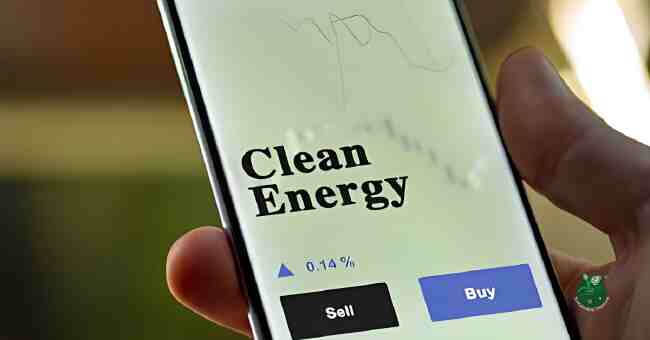Table of Contents
What exactly is the clean technology investment tax credit? Yes, this powerful tax incentive aims to accelerate domestic manufacturing and deployment of innovative clean energy technologies. After years of developing solar technologies, I was thrilled to learn the credit could support scaling production.
When starting the application, the criteria and forms seemed complex. But upon closer inspection, our utility-scale solar array met requirements. Working with great advisors, we achieved certification. The credits now improve our project ROI significantly.
This in-depth guide will walk you through everything you need to know to leverage this powerful tax credit. With the right strategy, you can substantially improve the return on investment (ROI) for deploying innovative clean technologies.
Let’s dive in.
An Introduction to Clean Energy Tax Credits
Before jumping into the details on this specific investment tax credit, let’s quickly cover the landscape of clean energy incentives available from the federal government:
- Renewable Electricity Production Tax Credit – Tax credit for electricity generated from renewable sources like wind and geothermal. This incentive has helped the US become a world leader in wind power.
- Residential Clean Energy Credit – Homeowners can claim tax credits for installing residential clean energy equipment like solar panels or geothermal heat pumps.
- Electric Vehicle Tax Credit – Purchasers of electric vehicles or plug-in hybrids can qualify for federal tax credits up to $7,500 per vehicle.
The clean technology investment tax credit focuses specifically on incentivizing commercial deployment of innovative clean energy technologies.
What is the Clean Technology Investment Tax Credit?
Officially referred to as the Qualifying Advanced Energy Project Credit, this tax credit was created under Section 48C of the tax code to spur the development of advanced energy infrastructure here in the US.
The goal is to incentivize manufacturers to locate their production facilities domestically rather than overseas. This boosts investment into transformational green technologies and creates local clean energy jobs.
This 30% investment tax credit applies to qualified facilities involved in:
- Solar, wind, geothermal, and other renewable generation
- Fuel cells, microturbines, and biomass gasifiers
- Electric grids and storage
- Carbon capture and storage
- Equipment for refining/blending renewable fuels
- Equipment for energy conservation like lighting and smart grids
- Pollution reduction equipment
- Other advanced energy property certified by the IRS
So if your company invests into building and equipping facilities to produce these clean technologies, you can leverage strong tax incentives by applying for certification.
Recent Expansions Under the Inflation Reduction Act
The Inflation Reduction Act passed in 2022 included major boosts to incentives for clean energy production and manufacturing. Specifically for the investment tax credit, it added $10 billion in new credit allocations through 2032.
Even more significantly, it expanded eligible costs to include the production of components like solar panels, wind turbines, batteries, and critical minerals processing. More clean tech manufacturing activities can now qualify for certification.
With these policy changes substantially expanding coverage, the credit is more valuable than ever for green tech developers.
Breaking Down the Benefits and Incentives
There are several advantageous ways that the clean technology investment tax credit can support your next renewable energy or efficiency project:
30% Credit of Qualifying Investment
The baseline credit provides a 30% tax credit based on your eligible project investment costs. For a $100 million factory, you could claim $30 million in credits. This immediately improves ROI and lowers the capital deployed.
Bonus Tax Credits
For projects that meet prevailing wage and apprenticeship requirements, the credit rate can be increased up to 32%. The IRS also offers bonus depreciation which further improves project economics.
Combines With Other Tax Credits
Importantly, the investment credit can generally be combined with other relevant federal incentives like the renewable electricity production tax credit or the carbon capture tax credit. So you can stack multiple tax benefits.
Here’s a quick example of how the credits can add up:
| Tax Credit | Amount |
|---|---|
| Clean Technology Investment Tax Credit (30%) | $30 million |
| Renewable Electricity Production Tax Credit (1.5¢/kWh) | $4 million annually |
| Carbon Capture Tax Credit ($35/metric ton) | $1.5 million annually |
As you can see, the total combined benefit is significant.
Reviewing the Qualification Criteria
Now that the value proposition is clear, what exactly makes a project eligible? Facilities producing clean energy equipment generally qualify if they meet certification requirements:
Qualified Energy Property
The facility must produce, refurbish, or manufacture equipment that supports renewable electricity, fuel cells, microturbines, battery storage, carbon capture, renewable fuels, pollution control, lighting efficiency, smart grid systems or other advanced energy properties.
New or Retrofitted Facility
The facility can be a new construction, expansion of an existing facility, or even a retrofit/retooling of a facility for clean energy production. However, it cannot have claimed credits under similar past programs.
Project Certification
All facilities must submit an application and pass an IRS certification process verifying that the property qualifies and will support domestic job creation. The technology and project details must meet all technical and economic eligibility criteria.
Placed in Service Deadline
Finally, projects must be commercially deployed and placed in service within 4 years after receiving certification. Facilities can take time to develop but credits ultimately expire if not activated by the deadline.
Examples of Qualified Investments
To give you a better idea of what types of projects qualify, here are a few examples of recently awarded credits:
- Solar Manufacturing – Production factory for photovoltaic solar panels and components
- Wind Turbine Production – New wind blade and turbine manufacturing facilities
- Geothermal Power Generation – Building a new geothermal power plant
- Grid Storage Batteries – Manufacturing advanced lithium-ion batteries for grid storage
- Carbon Capture Retrofit – Refitting a natural gas power plant with carbon capture equipment
- Biogas Production – Biogas production facility converting waste into renewable natural gas
As you can see, a wide range of impactful technologies and projects qualify. Most clean energy generation, storage, smart grid tech, pollution control systems, and associated manufacturing equipment are eligible if certified.
Navigating the Application Process
If your company is investing into an innovative clean technology facility as described above, here is a step-by-step guide to securing the tax credits:
1. Submit Part 1 and Part 2 Applications
During an initial application round announced by the IRS (usually annually), you must submit both:
- Part 1 – Basic information on the qualifying project and facility. This allows the IRS to assess your eligibility.
- Part 2 – A comprehensive technical submission with detailed project information required for certification.
The application Form 3468 and instructions outline exactly what information on your project needs to be included.
2. Pass Technical Review and Certification
The IRS along with the Department of Energy will evaluate your full application to validate that:
- The described facility and production will qualify as advanced energy property
- Projections demonstrate it will create a sufficient number of domestic jobs
- All other economic, viability and regulatory qualification criteria are met
This comprehensive review ensures only quality projects focused on impact receive huge credits.
If approved, you will receive formal project certification and allocation of credits.
3. Place Property in Service Within 4 Years
After certification, you generally have 4 years to activate your project and start producing clean energy equipment. The placed-in-service deadline ensures credits are going towards near-term deployment, not indefinitely delayed projects.
During development, you need to meet all prevailing wage, apprenticeship, and domestic content requirements. But otherwise you can proceed with typical project planning and construction.
Claim Credit Annually on Form 3468
Once your advanced energy facility is placed in service, you can start realizing the value of the tax credits:
Claim Credit Annually on Form 3468
Each year, you can claim the credit by filing Form 3468 with your corporate income tax return. The certified amount allocated to your project is divided over 5 years. So you don’t have to wait to realize the full benefit.
For example, with a $10 million allocation, you could claim $2 million for each of the first 5 years. If you have insufficient tax liability in a given year, you can carry forward unused credits for up to 20 years.
Credit Subject to Recapture
If you fall below the certification requirements (like failing to meet job targets), the IRS can recapture credits claimed in prior years. So you need to remain compliant.
Claim Additional Tax Credits
As mentioned previously, the investment tax credit often works in parallel with other incentives like the renewable electricity production credit or the carbon capture credit.
You would claim those project-specific credits separately on the appropriate forms, stacking additional tax benefits on top of the big upfront facility credit.
Leverage Outside Guidance
Given the complex application and claiming process, it’s highly advisable to work with technical consultants, accountants and advisors to ensure maximum credit value with full compliance. They can also help optimize the combination of available federal, state and local incentives.
The 30% rate delivers huge credits, but the stringent certification means claiming the incentive is by no means automatic. Pursuing these valuable tax benefits requires concerted focus and effort across your project development, construction, and ongoing reporting processes.
The Future of the Clean Technology Tax Credit
While the Inflation Reduction Act expanded support for the investment tax credit in 2022, further growth is expected:
Increased Program Funding
The allocation for credits is likely to increase steadily in coming years with further stimulus bills, especially as demand has overwhelmed recent funding rounds. More projects will be able to benefit.
Ongoing Legislative Expansions
There is bipartisan momentum to continue expanding federal clean energy manufacturing incentives to tackle climate change more assertively while creating domestic jobs. Similar programs in Canada and Europe are growing as well. So we can expect more US support over time.
This powerful credit is poised to accelerate further renewable energy adoption and emissions reductions across America. Are you ready to evaluate how your organization can tap into these incentives to lead the clean tech revolution?
FAQs
Who Is Eligible For The Investment Tax Credit?
The clean technology investment tax credit is available to any business, corporation, or developer that makes qualifying investments into certified advanced energy manufacturing facilities or renewable power generation.
Eligible projects include factories producing solar panels, wind turbines, electric vehicle batteries, carbon capture equipment, biogas digesters, microturbines, fuel cells and other certified technologies.
Businesses investing into innovative clean energy projects that create domestic jobs can apply.
How Do I Claim Tax Credits On Inflation Reduction Act?
The landmark Inflation Reduction Act expanded and extended many clean energy tax credits, including the investment tax credit covered here.
To claim credits under the IRA, you simply follow the same process – applying for certification if eligible and then filing IRS Form 3468 along with your tax return. An accountant can ensure you apply relevant credits correctly.
How Long Does It Take To Receive Your Tax Credit?
It typically takes 6-12 months after submitting a Part 1 and Part 2 application to receive an award of investment tax credits from the IRS. You won’t actually claim and receive the value of credits until your facility is operational – up to 4 years later.
Each year for the first 5 years after being placed in service, you claim 1/5 of the allocation.
Does A Tax Credit Increase My Refund?
Yes, claiming the investment tax credit will directly reduce your tax liability and increase your refund, assuming you paid taxes during the year.
If your total tax owed was lower than the credit amount, it turns into a refundable credit. You can also carry forward unused credits up to 20 years.
How Much Is The Investment Tax Credit?
The base credit provides a 30% tax credit for qualifying facilities. Meeting additional wage and apprenticeship requirements can increase the credit up to 32%.
When combined with other credits like the production tax credit or accelerated bonus depreciation, total incentives can add up quickly with a big upfront credit plus ongoing savings.
What Are The Benefits Of The Investment Tax Credit?
Key benefits include improving project return on investment, subsidizing capital costs to enable more clean energy deployment, supporting high labor standards, incentivizing domestic manufacturing rather than imports, reducing emissions from power generation/manufacturing, and creating a wide range of quality jobs from construction to engineering to factory production work.
What Documents Are Needed To Claim Solar Tax Credit?
To claim the commercial or residential solar investment tax credit, you will need a completed Form 3468, plus an invoice showing equipment purchase/installation costs, a statement certifying the solar array meets technical requirements, and any forms provided by your certifying body and installer.
This evidence should tie clearly back to entries made on Form 3468.
How Does The 30% Solar Tax Credit Work?
The existing 30% investment tax credit allows you to claim credits equal to 30% of qualified capital costs related to solar energy system investments, including equipment, installation, permitting, etc.
So if you spend $100,000 on rooftop solar for your business, you can claim a $30,000 credit to offset taxes. It starts phasing down to 26% in 2033.
Conclusion
In summary, the clean technology investment tax credit provides unmatched tax incentives to scale renewable energy, decarbonization tech and efficiency upgrades here in America.
The application process requires concerted focus. But clearing certification hurdles pays dividends for years via huge credits plus tax savings from parallel incentives.
I encourage all businesses pursuing impactful projects to evaluate potential eligibility. With appropriate tax planning, you can do well by doing good.
The clean energy transition relies on leaders leveraging programs like this. Reach out today to start your clean tax credit journey.



